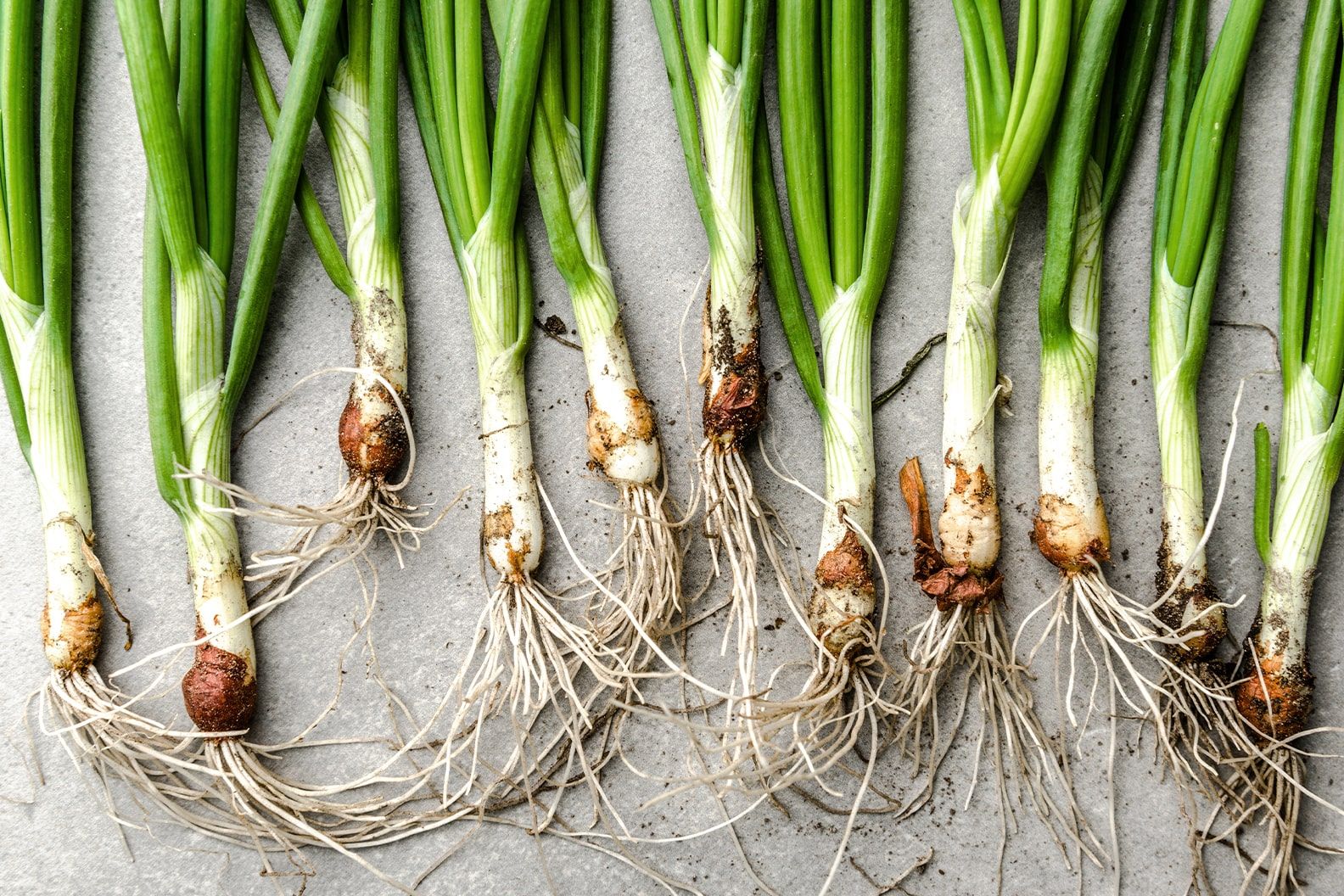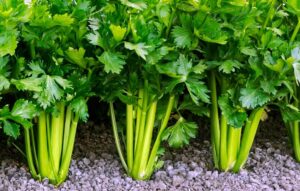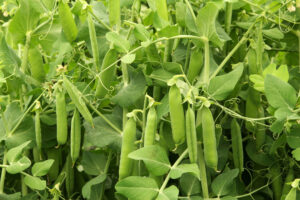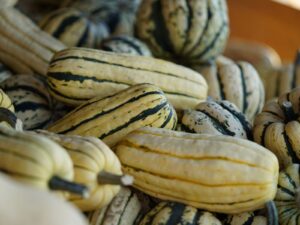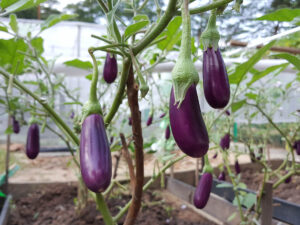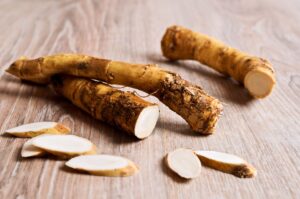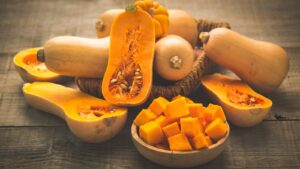How to Grow and Use Spring Onions: A Complete Guide
Spring onions, also known as scallions or green onions, are one of the most versatile and easy-to-grow culinary herbs available to home gardeners. Their mild, fresh flavor enhances countless dishes, from salads and stir-fries to soups and dips. What makes spring onions particularly appealing is their adaptability—you can grow them in gardens, containers, or even indoors on a sunny windowsill. Whether you’re a beginner or experienced gardener, this comprehensive guide will walk you through everything you need to know about growing, harvesting, and using spring onions in your cooking.
What Are Spring Onions?
Spring onions (Allium fistulosum) are immature onions harvested before the bulb fully develops. Unlike regular onions (Allium cepa), true spring onions have a milder flavor and are primarily grown for their long, green shoots and small, white bulbs. They’re incredibly nutritious, containing vitamins A, C, and K, along with folate, calcium, and potassium, according to the USDA FoodData Central.
The US market for spring onions has seen steady growth, with increasing consumer interest in fresh, homegrown produce. According to the USDA, onions (including spring onions) are one of the most widely grown vegetables in American home gardens, and for good reason—they’re easy to cultivate and provide excellent returns on minimal investment of time and space.
Benefits of Growing Your Own Spring Onions
Before diving into the how-to, let’s consider why you should grow your own spring onions:
- Economic Value: A single packet of seeds can produce dozens of harvests through successive planting
- Freshness: Harvest exactly when you need them for maximum flavor
- Sustainability: Reduce packaging waste and transportation emissions
- Convenience: Have fresh herbs available just steps from your kitchen
- Satisfaction: Experience the joy of growing your own food
Growing Spring Onions: Three Popular Methods
You can grow spring onions using several different approaches, depending on your space, resources, and preferences. Let’s explore the three most popular methods.
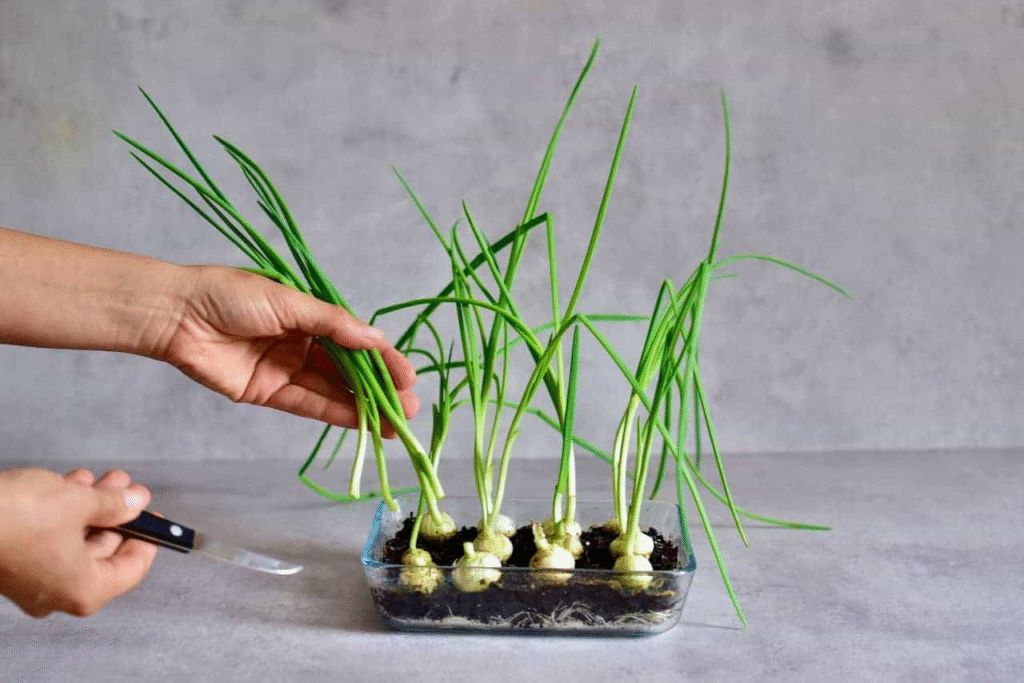
Method 1: Growing Spring Onions from Seeds
Starting spring onions from seeds is economical and gives you the widest variety choice. Here’s how to succeed:
When to Plant
In the US, timing varies by region:
- USDA Zones 3-5: Start seeds indoors 8-10 weeks before last frost, transplant when soil reaches 50°F
- USDA Zones 6-7: Direct sow from early spring through fall
- USDA Zones 8-10: Plant from fall through early spring, avoiding hot summer months
According to the USDA Plant Hardiness Zone Map, understanding your specific growing zone is crucial for timing your spring onion planting correctly.
Step-by-Step Seed Planting Guide
- Select your seeds: Choose a variety suited to your climate and taste preferences
- Prepare the soil: Spring onions prefer well-draining, fertile soil with a pH between 6.0-7.0
- Sow seeds: Plant seeds ¼ inch deep and 1 inch apart in rows spaced 6 inches apart
- Water gently: Keep the soil consistently moist but not waterlogged
- Thin seedlings: Once they reach 2-3 inches tall, thin to 2-3 inches apart
- Fertilize lightly: Apply a balanced organic fertilizer every 3-4 weeks
Germination typically occurs within 7-14 days, with harvest possible in as little as 60-80 days, depending on the variety and growing conditions.
Method 2: Growing Spring Onions from Sets or Transplants
If you’re looking for a head start, consider using onion sets (small bulbs) or transplants:
- Purchase quality sets: Look for firm bulbs about the size of a marble
- Plant at proper depth: Insert sets so just the tip is visible above soil
- Space appropriately: Position sets 2-3 inches apart in rows 6 inches apart
- Water thoroughly: Provide immediate hydration to help establish roots
This method typically produces harvestable spring onions in just 40-60 days, making it ideal for impatient gardeners or those in shorter growing seasons.
Method 3: Regrowing Spring Onions from Kitchen Scraps
Perhaps the most satisfying method is regrowing spring onions from those you’ve already purchased:
- Save the root end: Cut off the bottom inch of store-bought spring onions, keeping the roots intact
- Place in water: Stand the root ends in a glass with enough water to cover the roots
- Position in sunlight: Place the glass on a sunny windowsill
- Change water regularly: Refresh every 1-2 days to prevent bacteria
- Watch them grow: New green shoots will appear within days
- Transfer to soil (optional): For continued growth, transplant to soil once new growth is established
Using this method, you can have a perpetual supply of spring onions by keeping a rotation of regrowth happening year-round.
Indoor Growing: Spring Onions on Your Windowsill
One of the greatest advantages of spring onions is their adaptability to indoor growing. Here’s how to succeed with indoor cultivation:
Choosing the Right Container
For indoor growing, consider these container options:
- Traditional pots: Choose containers at least 6 inches deep with drainage holes
- Window boxes: Ideal for growing multiple plants in a row
- Repurposed containers: Clean yogurt cups, milk cartons, or takeout containers with drainage holes added
- Specialized herb planters: Available with self-watering features for convenience
Location and Light Requirements
Spring onions need adequate light to thrive indoors:
- Light exposure: At least 6 hours of direct sunlight daily
- Ideal locations: South or west-facing windows provide optimal natural light
- Supplemental lighting: If natural light is insufficient, consider LED grow lights positioned 6-12 inches above plants
Indoor Growing Care Schedule
Follow this care routine for successful indoor spring onions:
- Watering: When the top inch of soil feels dry (typically every 2-3 days)
- Fertilizing: Apply half-strength liquid fertilizer every 3-4 weeks
- Rotating: Turn containers regularly to prevent leaning toward light
- Harvesting: Begin taking outer leaves when plants reach 6-8 inches tall
Container Gardening: Perfect for Patios and Balconies
Growing spring onions in containers outdoors combines the benefits of garden growing with the convenience of containers:
Selecting the Right Pots
For successful container growing:
- Size matters: Choose containers at least 6-8 inches deep
- Material considerations: Terracotta pots dry out quickly but provide good aeration; plastic retains moisture longer
- Drainage: Ensure adequate drainage holes to prevent root rot
Container Growing Step-by-Step
- Fill with quality potting mix: Use a well-draining potting soil, ideally enriched with compost
- Plant appropriately: Follow the same spacing guidelines as garden planting
- Position strategically: Place containers where they’ll receive at least 6 hours of sunlight
- Monitor moisture carefully: Container plants typically need more frequent watering than garden plants
Garden Growing: Maximizing Your Harvest
For those with garden space, growing spring onions in the ground offers the opportunity for larger harvests:
Selecting the Perfect Location
- Sun exposure: Choose a spot with full sun to light shade (6+ hours of direct sunlight)
- Soil quality: Well-draining, fertile soil is ideal
- Companion planting: Spring onions grow well alongside carrots, beets, and lettuce but should be kept away from beans and peas
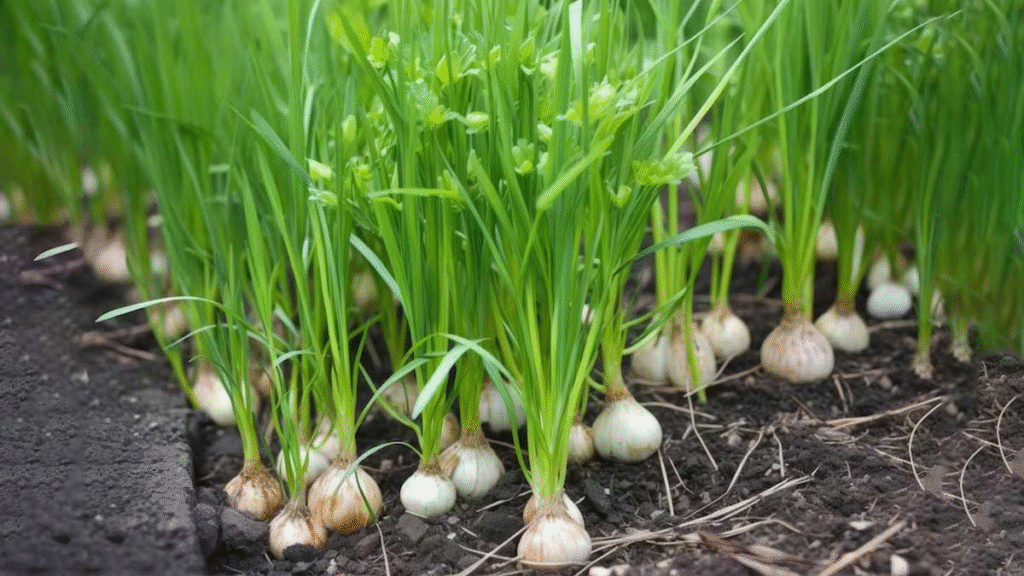
Garden Bed Preparation
Proper bed preparation sets the stage for success:
- Clear the area: Remove all weeds and debris
- Test soil pH: Aim for 6.0-7.0; adjust if necessary
- Amend soil: Incorporate 2-3 inches of compost
- Level and smooth: Create a flat planting surface
Succession Planting for Continuous Harvest
To ensure a steady supply of spring onions:
- Plant in intervals: Sow new seeds every 2-3 weeks
- Designate sections: Divide your garden into areas for different planting dates
- Track plantings: Keep a garden journal to note planting dates and harvest times
Spring Onion Varieties Worth Considering
Different varieties offer unique characteristics worth exploring:
| Variety | Days to Harvest | Special Characteristics | Best Growing Method |
|---|---|---|---|
| White Lisbon | 60-70 days | Classic white bulb, mild flavor | Seeds or sets |
| Evergreen Hardy White | 65-75 days | Extremely cold-tolerant, perfect for northern zones | Seeds |
| Tokyo Long White | 75-90 days | Extra long white stems, heat-tolerant | Seeds |
| Red Beard | 60-70 days | Purple-red stems, decorative and flavorful | Seeds only |
| Guardsman | 50-60 days | Disease-resistant, uniform size | Seeds or sets |
| Parade | 65-70 days | Upright growth, ideal for container growing | Seeds |
Common Challenges and Solutions
Even easy-growing spring onions can face occasional problems:
Pest Management
Common pests affecting spring onions include:
- Onion flies: Protect young plants with row covers
- Thrips: Spray with insecticidal soap or neem oil
- Slugs and snails: Apply diatomaceous earth around plants or use beer traps
According to the USDA Agricultural Research Service, integrated pest management approaches combining multiple strategies are most effective for organic growers.
Disease Prevention
Watch for these common diseases:
- Downy mildew: Improve air circulation and avoid overhead watering
- White rot: Practice crop rotation; avoid planting in affected soil for 8+ years
- Neck rot: Ensure proper curing if storing bulbs
Environmental Issues
Address these common growing challenges:
- Bolting (premature flowering): Caused by temperature fluctuations; provide consistent conditions and harvest promptly
- Splitting: Result of irregular watering; maintain consistent soil moisture
- Stunted growth: Often indicates nutrient deficiency; apply balanced fertilizer
Harvesting and Using Your Spring Onions
The culmination of your growing efforts comes at harvest time:
When and How to Harvest
You have several harvesting options:
- Cut-and-come-again: Snip outer leaves 1 inch above soil line when plants reach 6+ inches
- Whole plant harvest: Pull entire plant when bulb reaches desired size
- Baby greens: Thin seedlings and use the pulled plants as microgreens
Storage Methods
Extend the usability of your harvest:
- Short-term refrigeration: Wrap unwashed spring onions in damp paper towels and refrigerate for up to 1 week
- Freezing: Chop and freeze in ice cube trays with water or oil
- Drying: Use a dehydrator or low oven to dry for long-term storage
Culinary Uses
Spring onions shine in numerous culinary applications:
- Raw applications: Add to salads, sandwiches, tacos, or as garnish
- Cooked uses: Incorporate into stir-fries, soups, omelets, or roasted vegetable medleys
- Asian cuisine: Essential ingredient in many Chinese, Korean, and Japanese dishes
- Compound butters: Mix chopped spring onions with softened butter for a flavor boost
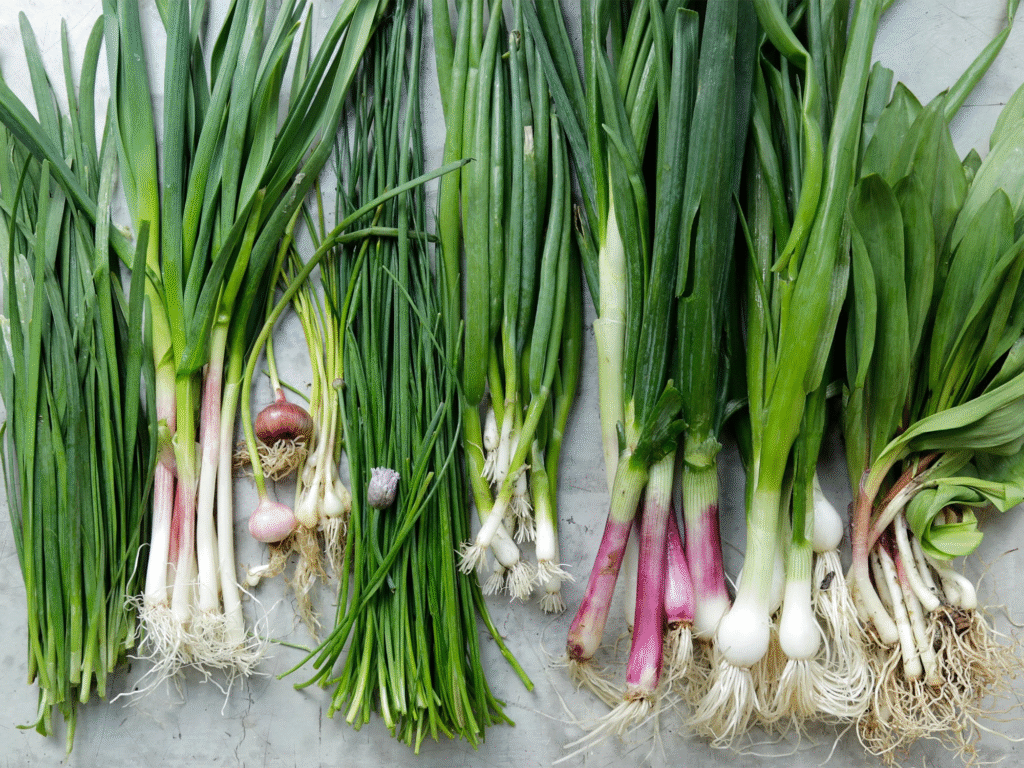
Sustainability Aspects of Growing Spring Onions
Growing your own spring onions contributes to sustainability in several ways:
- Reduced food miles: Eliminates transportation emissions
- Packaging reduction: No plastic bags or rubber bands needed
- Water conservation: Home growing typically uses less water than commercial production
- Chemical reduction: Control your own growing inputs and avoid pesticides
Seasonal Growing Calendar for US Regions
Adapt your growing schedule to your region:
- Northeast/Midwest: Start seeds indoors February-March; direct sow April-August
- Pacific Northwest: Direct sow March-September
- Southeast: Plant September-April, avoiding summer heat
- Southwest: Best planted October-February in low desert regions
- Mountain states: Start indoors in March, direct sow May-July
Conclusion: The Joy of Growing Spring Onions
Growing spring onions offers a perfect entry point into herb and vegetable gardening. Their forgiving nature, quick growth, and multiple growing options make them accessible to everyone from apartment dwellers to those with expansive gardens. By following the guidance in this article, you’ll be well-equipped to grow, harvest, and enjoy fresh spring onions year-round.
Whether you’re snipping a few green tops for garnishing a soup or pulling whole plants for grilling, the satisfaction of growing your own spring onions adds an extra layer of pleasure to cooking. Start with a small planting, experiment with different varieties and methods, and soon you’ll wonder how you ever cooked without these versatile herbs just steps away from your kitchen.
Remember that spring onions aren’t just delicious—they’re also part of a sustainable approach to food that reconnects you with seasonal cycles and reduces your environmental impact.
